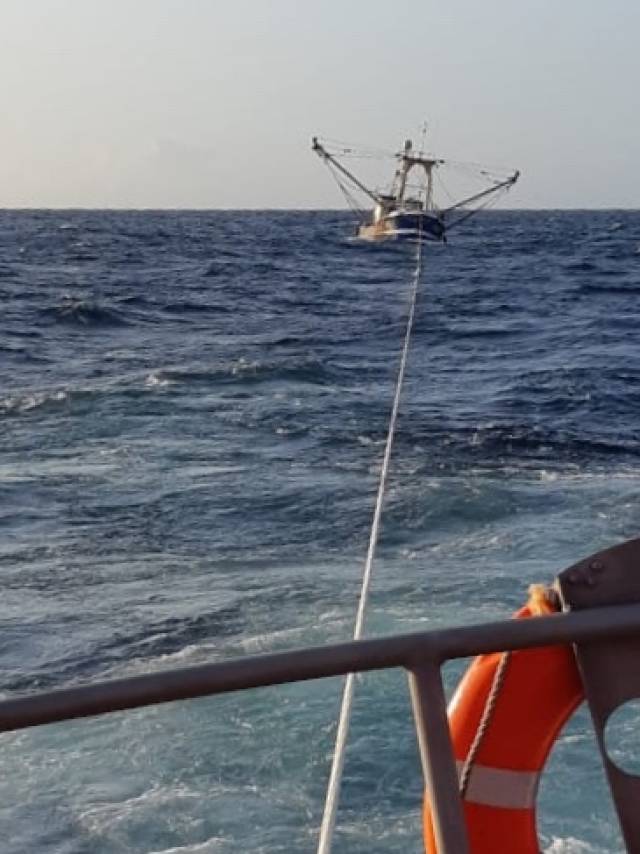The Courtmacsherry all-weather Trent Class RNLI Lifeboat Frederick Storey Cockburn was called out at 2.36 am this morning Wednesday to go to the aid of an 85-foot fishing boat which sought assistance as it got into difficulties near the Kinsale Gas Rigs approx 25 miles east of the Old Head of Kinsale in West Cork.
Under Coxswain Sean O Farrell and a crew of six, the lifeboat crew was underway within 10 minutes under the cover of darkness and immediately made its way to the area of the casualty. The distress alarm was raised by the fishing vessel with three crew on board when they fouled their propellers and became disabled while trawling in the area.
The Lifeboat located the casualty at 4.15 am and a tow rope was immediately attached in order to secure the fishing vessel in lumpy seas with a strong wind blowing 20 Knots.
The Lifeboat proceeded to tow the large stricken boat at low speed back to the safe surrounds of Kinsale Harbour and have just arrived there safely after being at sea for over 9 hours. The causality is now being docked at the Kinsale Pierhead.
Commenting on today’s early morning Callout, Voluntary Lifeboat Station LPO Vincent O Donovan praised all the Crew members and Station Personnel that responded from their beds quickly this morning when the bleepers went off and carried out this rescue with great professionalism in complete darkness and with the weather deteriorating.
The crew onboard today’s early morning call were Coxswain Sean O Farrell, Mechanic Chris Guy and crew members Denis Murphy, Simon Locke, Jim O Donnell, Conor Dullea and Dean Hennessey.
The Lifeboat will now make its way back to its base in Courtmacsherry to refuel and return back to its mooring in readiness of whenever the next callout will be.
The All Weather Lifeboat will be open to the public on this coming Sunday from 2 to 5.30pm at the Courtmacsherry Pier as part of the Model Mania weekend in the village being organized by the Lifeboat Station. Models of all makes of Lifeboats along with Model trains, boats, trucks, planes etc will be available for viewing in the Community Centre on both Saturday and Sunday from 10am to 5pm with free entry on both days.































































